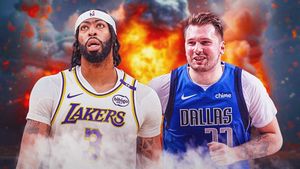A theoretical prediction for generating isolated attosecond pulses (IAPs) within the water window spectral region has been made, significantly advancing attosecond physics. Researchers propose utilizing two-color femtosecond laser pulses interacting with hydrogen atoms to achieve this groundbreaking development. Attosecond pulses present unique capabilities, allowing scientists to study electron dynamics and observe rapid chemical reactions at unprecedented time scales.
At the heart of this discovery is the innovative use of chirped laser pulses. The study reveals how manipulating the instantaneous frequency of the laser enhances the generation of soft X-ray isolated attosecond pulses. Specifically, the research utilizes a chirped 3.5 optical cycles laser pulse with 800 nm wavelength and 5 × 10¹⁴ W/cm² intensity, combined with control fields at 1600 nm wavelength and 1.25 × 10¹⁴ W/cm² intensity.
“The ability to generate isolated attosecond pulses opens up possibilities for observing and manipulating electronic dynamics on an ultrafast time scale,” stated the authors of the article. This innovative approach holds promise for high-order harmonic generation (HHG), which is pivotal to producing these fleeting pulses.
The significance of the water window (defined between 284 eV and 543 eV photon energy) is emphasized, as this window allows for soft X-rays to penetrate biological tissues, rendering the produced IAPs valuable not only for fundamental research but also for advancements in medical imaging and materials science. Attosecond pulses provide tools for direct observation and control over chemical and physical processes at the electron level, fundamentally altering our approach to photonics and quantum mechanics.
This study also introduces practical methods to manage the notoriously challenging production of isolated attosecond pulses. Different types of gating methods such as amplitude gating (AG), temporal gating, and polarization gating (PG) are explored, wherein biologically relevant atoms are subjected to varying wavelengths and intensities of the two-color driving laser pulses.
For usability, the research discusses how to optimally configure the control field — with intensities ranging from \/4 to \/49 of the main field — to maximize the HHG spectrum's coverage over the water window. This includes innovative pulse duration adjustments to achieve attosecond pulses below 120 as.
The findings encourage future exploration, focusing on the mustering phase matching techniques and the minimization of macroscopic effects during HHG to improve pulse quality and integrity. “Equipped with such powerful tools, electron dynamics can be studied with newfound clarity and precision,” the authors of the article noted.
This theoretical framework lays the groundwork for practical applications, inviting experimental work to put these predictions to the test. The combination of chirped two-color laser pulses marks not only significant advancements for electron dynamics studies but also opens doors to future technologies reliant on ultrafast laser manipulation.
Conclusively, this exciting research with its promise for improved attosecond pulse generation propels the field of ultrafast science forward, inviting scientists to explore and utilize these unprecedented temporal resolutions for innovative breakthroughs.



